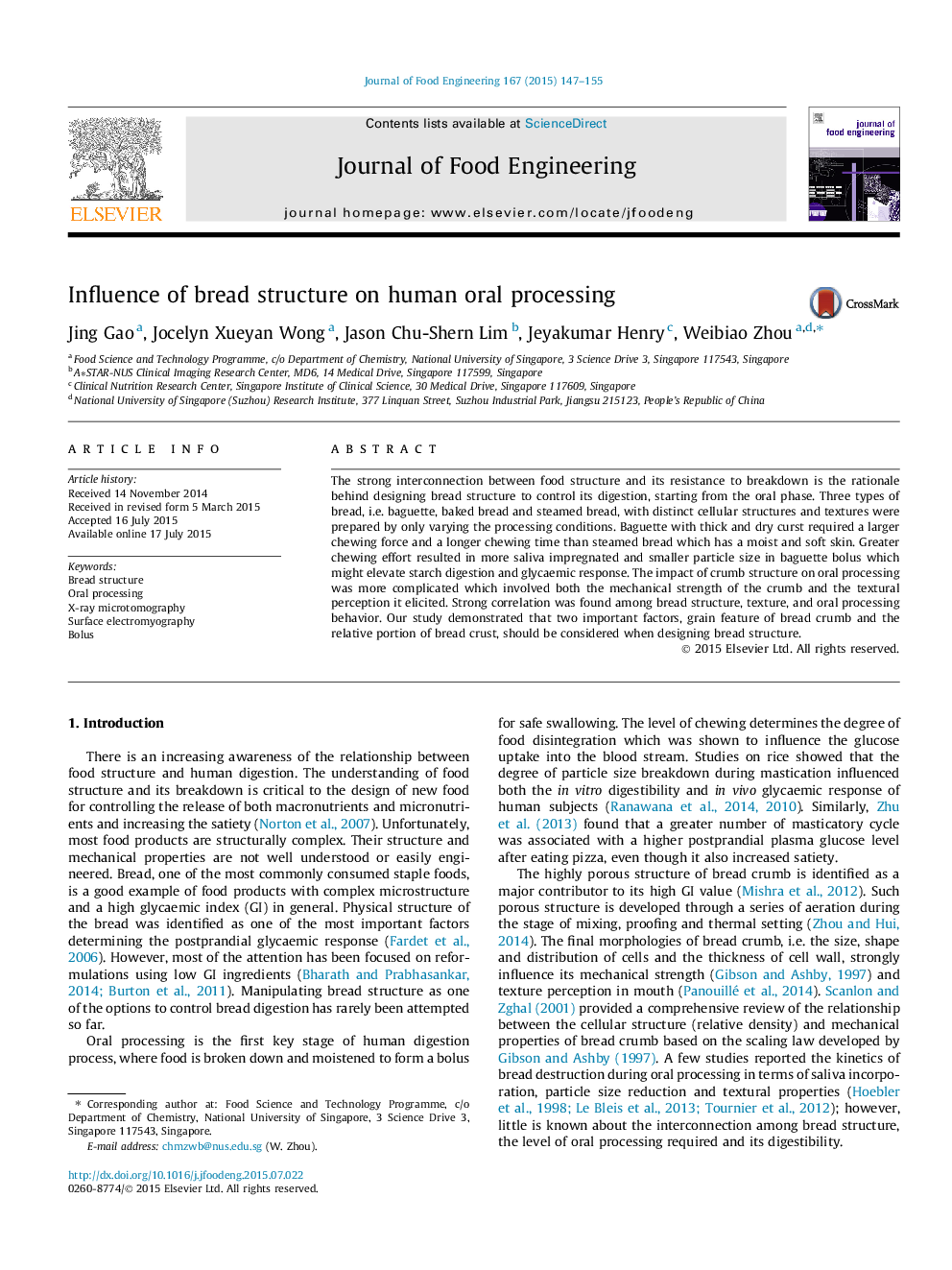| Article ID | Journal | Published Year | Pages | File Type |
|---|---|---|---|---|
| 10277242 | Journal of Food Engineering | 2015 | 9 Pages |
Abstract
The strong interconnection between food structure and its resistance to breakdown is the rationale behind designing bread structure to control its digestion, starting from the oral phase. Three types of bread, i.e. baguette, baked bread and steamed bread, with distinct cellular structures and textures were prepared by only varying the processing conditions. Baguette with thick and dry curst required a larger chewing force and a longer chewing time than steamed bread which has a moist and soft skin. Greater chewing effort resulted in more saliva impregnated and smaller particle size in baguette bolus which might elevate starch digestion and glycaemic response. The impact of crumb structure on oral processing was more complicated which involved both the mechanical strength of the crumb and the textural perception it elicited. Strong correlation was found among bread structure, texture, and oral processing behavior. Our study demonstrated that two important factors, grain feature of bread crumb and the relative portion of bread crust, should be considered when designing bread structure.
Related Topics
Physical Sciences and Engineering
Chemical Engineering
Chemical Engineering (General)
Authors
Jing Gao, Jocelyn Xueyan Wong, Jason Chu-Shern Lim, Jeyakumar Henry, Weibiao Zhou,
